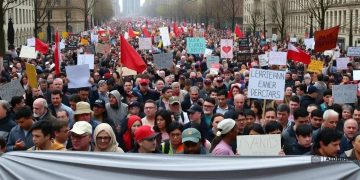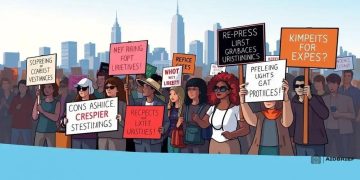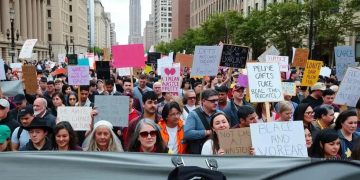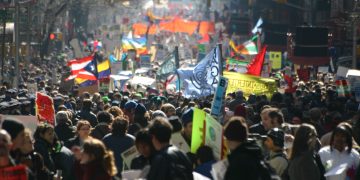Union strike demonstrations escalate: what you need to know
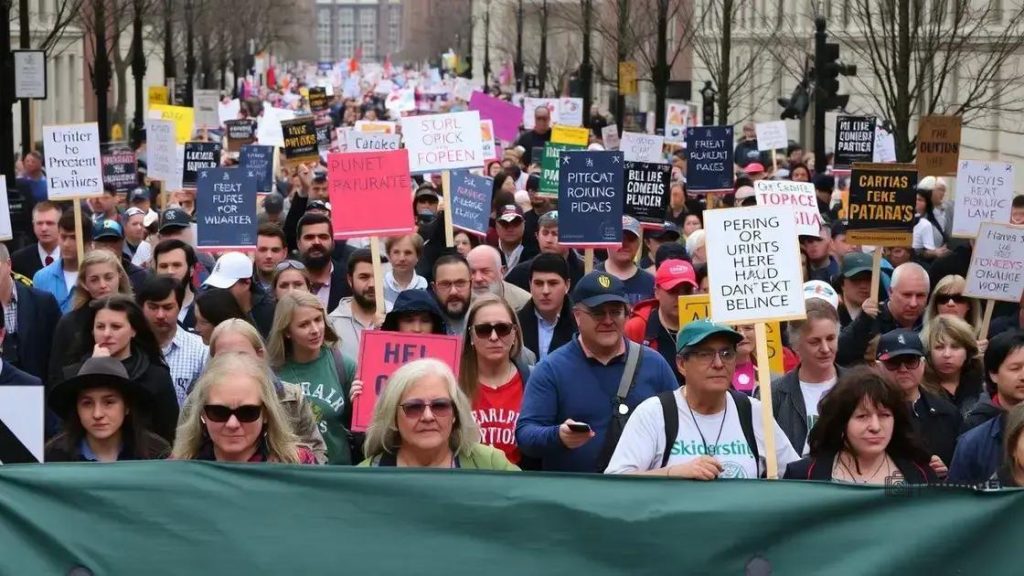
Union strike demonstrations escalate as workers demand better wages, job security, and improved working conditions, with increased public support and media coverage playing vital roles in these movements.
Union strike demonstrations escalate as workers rally for change and better conditions. Have you noticed the rise in protests and their impact on everyday life? Let’s dive into what’s fueling this movement.
Understanding the current situation of union strikes
Today, understanding the current situation of union strikes is crucial. As various industries face challenges, workers are increasingly voicing their needs for better conditions and pay. The landscape of labor relations is shifting, and striking actions are now more visible than ever.
Key Factors Driving Union Strikes
Several elements are contributing to the rise of union strikes. Economic challenges, workplace safety issues, and the push for fair wages are all factors at play. These concerns resonate with many workers, prompting them to take action.
- Wage Disparity: Many employees feel they deserve better compensation for their efforts.
- Job Security: In uncertain economic times, job stability is a growing concern.
- Working Conditions: Unsafe or unhealthy workplaces can lead to increased protests.
- Employee Rights: A push for respect and fair treatment is fundamental.
As union strikes gather momentum, the public’s awareness has also increased. Social media plays a significant role in sharing information about the ongoing demonstrations. This connection helps community support for striking workers and encourages dialogue about labor rights.
The Impact on Industries
The ongoing union strikes are not without consequences. Various sectors, including healthcare, education, and manufacturing, have felt the effects. Strikes can disrupt daily operations, causing delays and financial losses. However, they also bring attention to essential issues that need addressing.
As we observe the current situation, it’s evident that awareness and activism are becoming more intertwined. Workers are uniting and demanding change, igniting conversations about labor laws and the rights of employees.
Key reasons behind the escalating demonstrations
Key reasons behind the escalating demonstrations reveal the growing frustration among workers. Many individuals feel that their voices are not being heard in workplace discussions. This sentiment drives them to join protests and make their demands known.
Increased Cost of Living
One major factor is the rising cost of living. Workers are struggling to keep up with expenses while their wages remain stagnant. This disconnect has led to greater unrest.
- Housing costs: Rent and home prices are skyrocketing.
- Inflation: Increasing prices for basic necessities hit hard.
- Healthcare costs: Rising medical expenses add to financial strain.
As the cost of living continues to climb, employees are seeking fair compensation. They argue that their efforts should be rewarded adequately, prompting greater participation in strikes and demonstrations.
A Call for Better Working Conditions
Another reason for the increased demonstrations is the demand for better working conditions. Many workers report feeling unsafe or overworked. This concern has fueled a desire for change.
Workers are raising their voices about long hours and inadequate safety measures. The need for a healthy workplace is crucial, and many are not willing to compromise on this issue. As a result, strikes have gained momentum as workers stand together to demand improvements.
Awareness of these factors continues to grow, leading more individuals to join the movement. The determination among workers fuels the escalated demonstrations, and their voices become harder to ignore.
Impact of union strikes on various industries
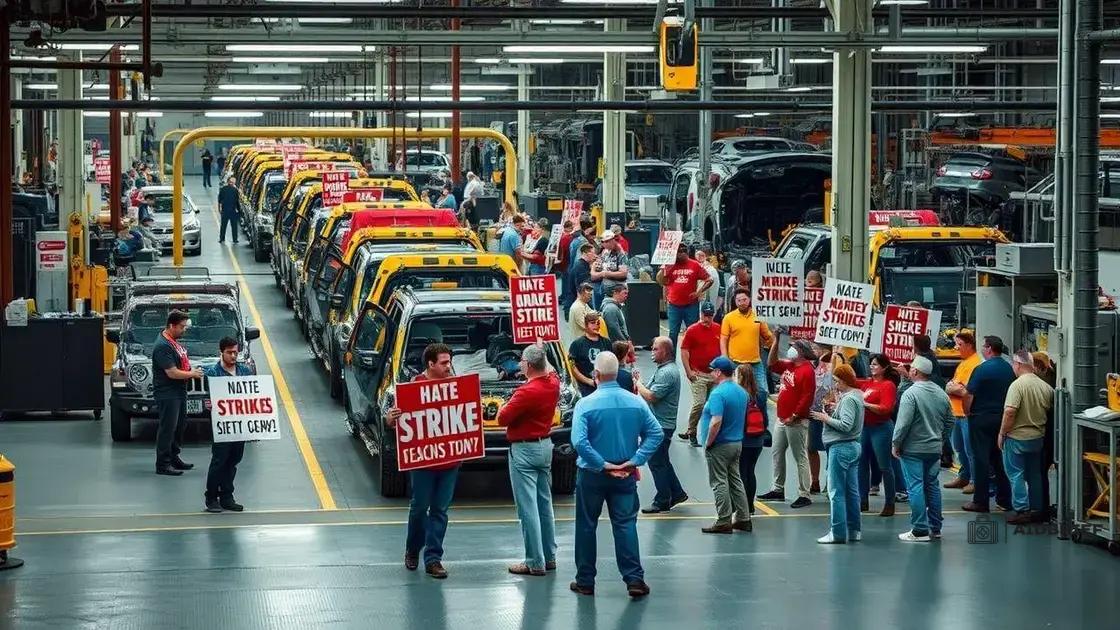
The impact of union strikes on various industries is profound and far-reaching. Strikes do not only affect the workers involved; they also influence businesses, customers, and the economy as a whole. With increasing demonstrations, it’s crucial to explore how different sectors experience these disruptions.
Effects on Key Sectors
Many industries face significant challenges during union strikes. This can lead to a variety of outcomes that vary by sector. For example, manufacturing plants often see halted production, while service industries might experience canceled appointments.
- Manufacturing: Strikes can stop production lines, leading to delays in product delivery.
- Healthcare: Worker strikes in this sector can compromise patient care, putting lives at risk.
- Transportation: Strikes can disrupt logistics and travel, affecting freight and passengers.
- Education: School strikes can halt education, impacting children’s learning.
Additionally, the ripple effects of these strikes can cause supply chain issues, making it difficult for businesses to meet customer demands. As production stalls, companies might face financial losses and damaged reputations.
Long-Term Consequences
The long-term consequences of union strikes can shape an industry for years. If striking workers succeed in their demands, it may lead to better working conditions, which can attract more talent. However, if the strikes lead to negative public perceptions, companies may suffer in the long run.
Furthermore, increased awareness of workers’ rights can lead to a shift in public opinion, encouraging more people to support labor movements and strike actions. This evolving landscape highlights the necessity for ongoing conversations surrounding labor rights and the need for fair treatment in the workplace.
Public perception and media coverage of strikes
The public perception and media coverage of strikes play a crucial role in shaping the narrative around labor movements. In recent years, more people have become aware of the struggles faced by workers through various media channels. This increased awareness influences how society views the importance of union actions.
Media Representation
How the media portrays strikes can significantly affect public opinion. News reports, social media posts, and documentaries can either support or undermine the workers’ cause. When media outlets highlight the reasons behind the strikes, it fosters empathy and understanding among the general public.
- Balanced Reporting: Providing context around the issues can lead to public support.
- Focus on Human Stories: Personal narratives often resonate more than statistics.
- Critique of Employers: Exposing unfair practices can sway public sentiment.
Public support can lead to greater pressure on companies and governments to address the concerns of workers. When people understand what is at stake, they are more likely to stand in solidarity with those protesting.
Social Media’s Role
Social media platforms have revolutionized how strikes are communicated. Workers and supporters can share their experiences in real time, creating a powerful grassroots movement. Viral posts can attract attention quickly, rallying more supporters and amplifying the workers’ message.
Hashtags and campaigns can unite people across various locations, turning local strikes into national movements. This accessibility helps more people learn about labor issues and encourages them to engage in conversations about workers’ rights.
As society becomes more informed thanks to media coverage, the perception of strikes evolves. When these movements gain widespread support, they create pathways for improvements in labor laws and working conditions.
What the future holds for union demonstrations
The future of union demonstrations is likely to evolve as the labor landscape changes. Workers continue to organize and assert their rights, leading to a more dynamic environment. As societal attitudes shift, we can expect to see both challenges and opportunities for these movements.
Increasing Digital Engagement
With the rise of technology, unions are leveraging digital platforms to enhance their outreach. Social media plays a critical role in mobilizing supporters and spreading awareness about labor issues. This trend is likely to grow as younger generations, who are tech-savvy, advocate for their rights.
- Online Campaigns: Unions can create petitions and online movements to gather support.
- Virtual Strikes: Coordinating online actions can complement physical demonstrations.
- Real-Time Communication: Instant updates keep members informed and engaged.
As more workers join the digital conversation, we may see increased participation in union activities. The ability to connect online allows for broader coalitions that cross geographic boundaries.
Shifting Public Attitudes
Public perception of union demonstrations is also changing. As more people recognize the importance of fair labor practices, support for unions may increase. This shift can foster a more favorable environment for demonstrations.
Moreover, with recent economic challenges, people are becoming more aware of their own working conditions. Heightened awareness can lead to solidarity and increased participation in union actions.
As the future unfolds, union demonstrations may become more visible and impactful. Workers will continue to advocate for their rights, utilizing both traditional and innovative strategies to ensure their voices are heard. Through collaboration and adaptation, unions can pave the way for meaningful change in the workplace.
FAQ – Frequently Asked Questions about Union Strikes
What are the main causes of union strikes?
The main causes of union strikes include wage disparities, unsafe working conditions, job security issues, and the demand for better benefits.
How do union strikes impact employees and employers?
Union strikes can disrupt operations for employers while raising employees’ concerns. Strikes can lead to negotiations for better conditions but may also cause financial losses.
What role does social media play in modern union demonstrations?
Social media allows unions to mobilize support quickly, share real-time updates, and expand outreach beyond local communities, enhancing visibility and awareness.
How can public perception affect union actions?
Positive public perception can increase support for union demonstrations, leading to successful negotiations. Conversely, negative portrayal can hinder their efforts.
